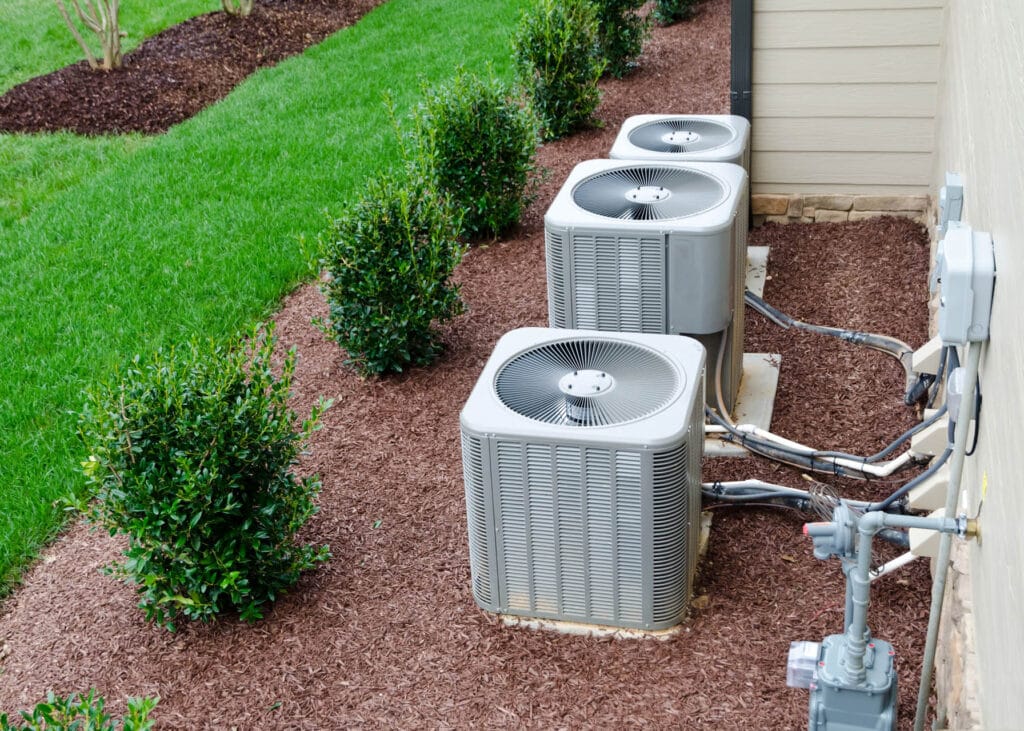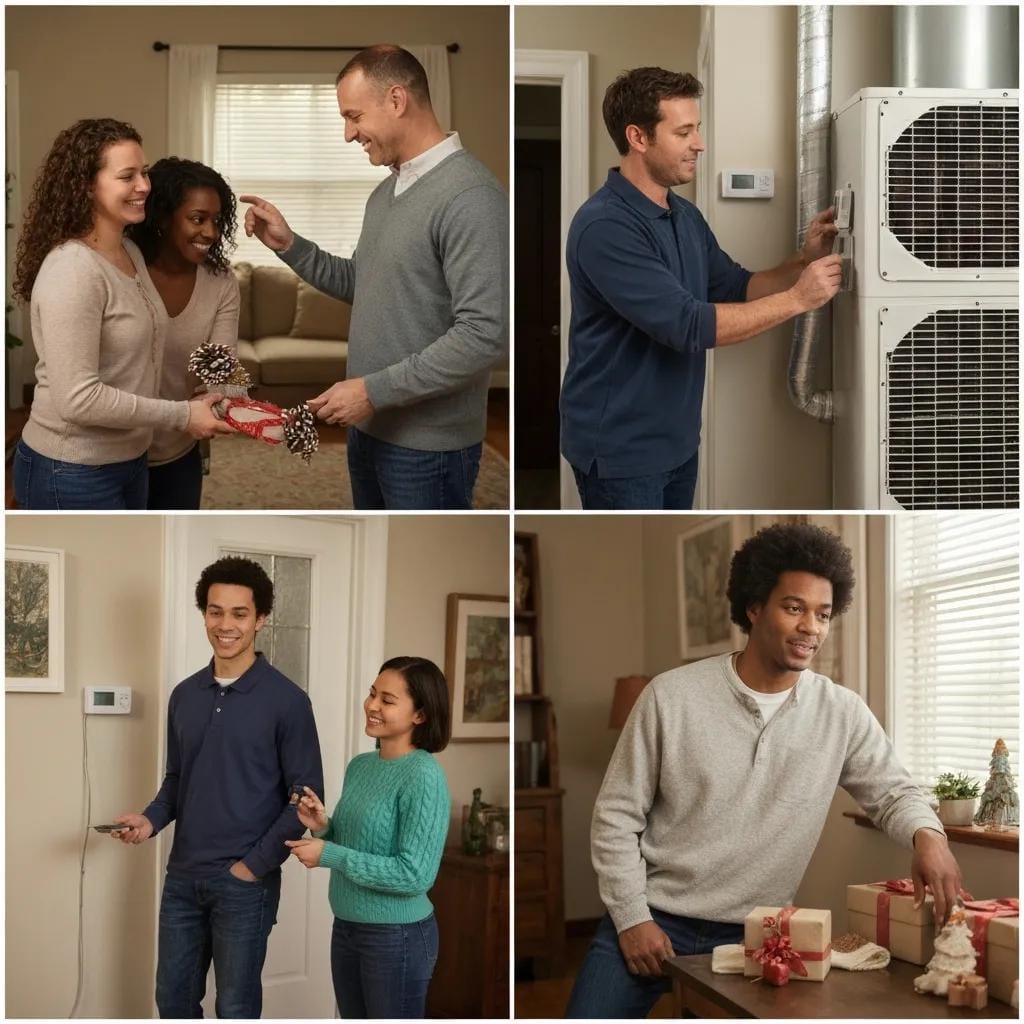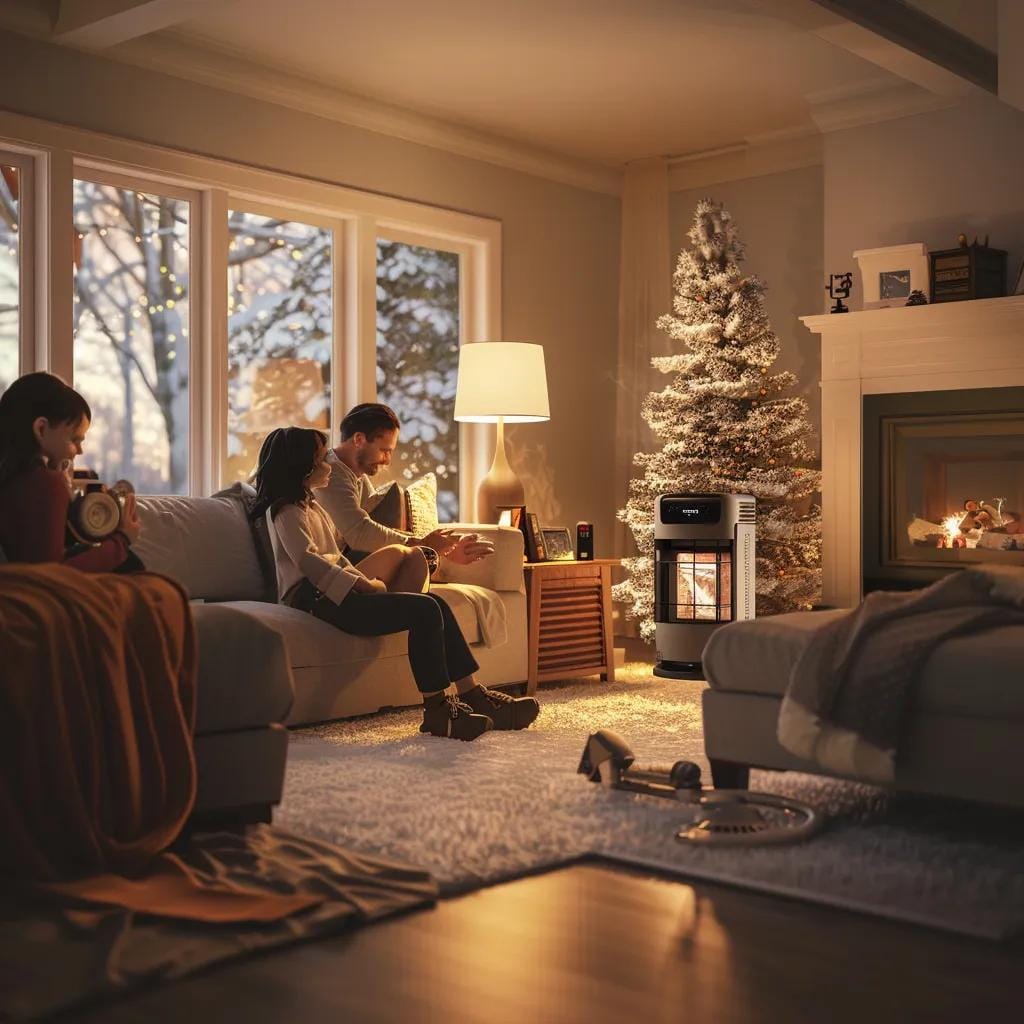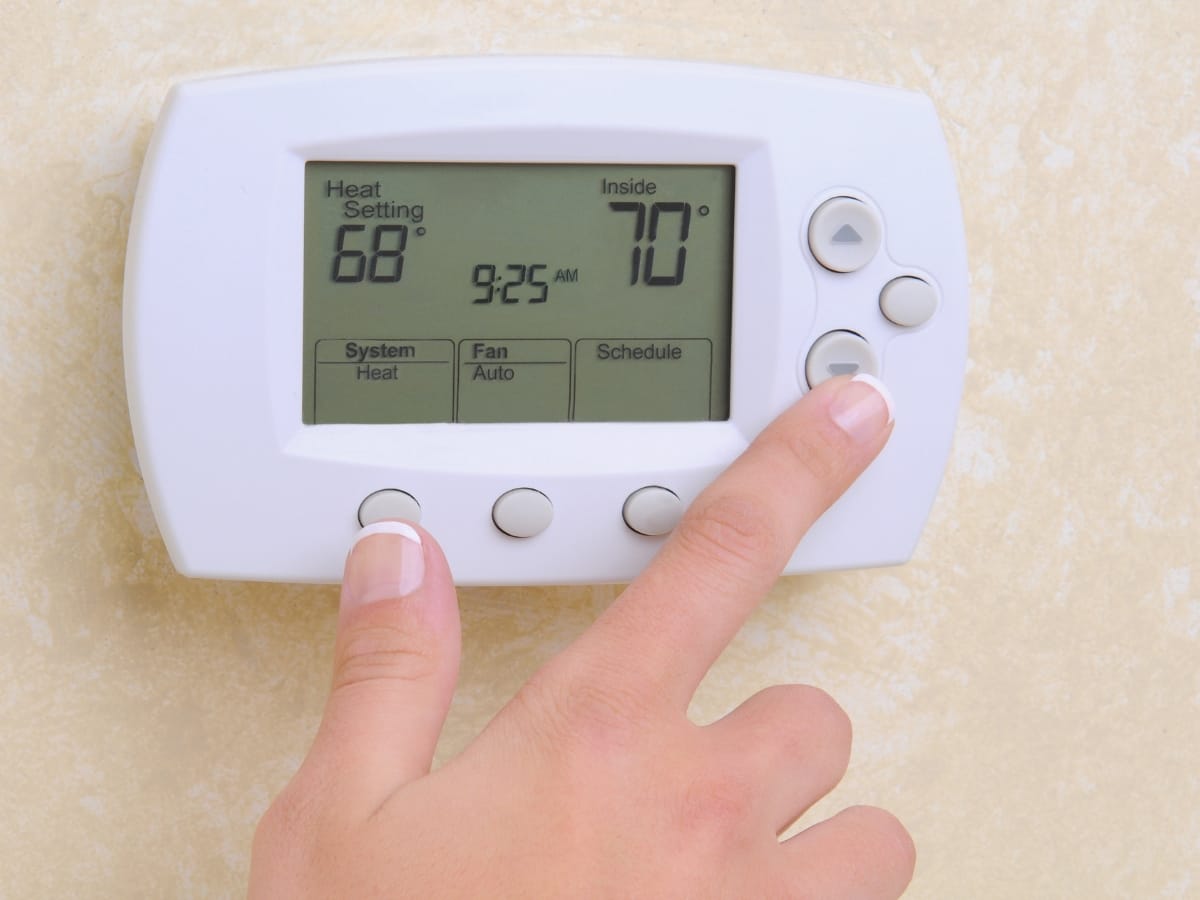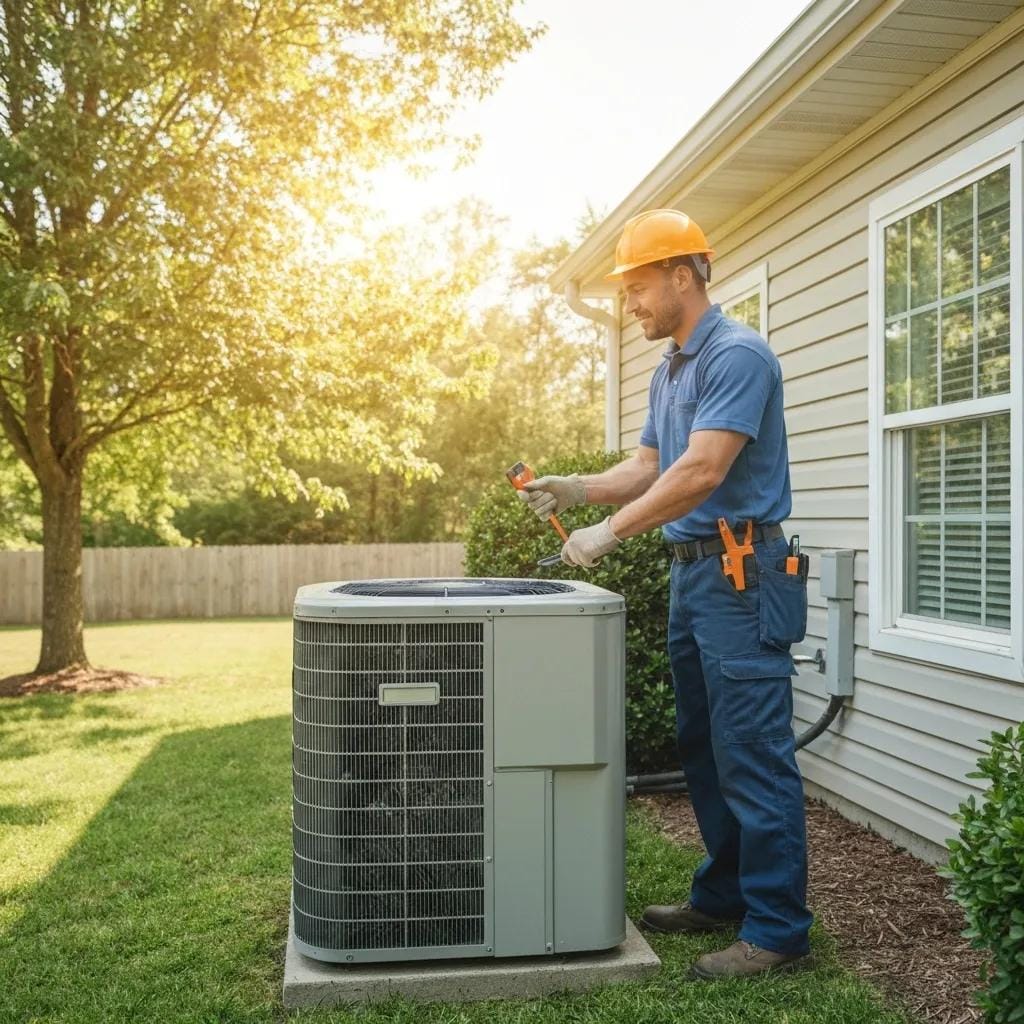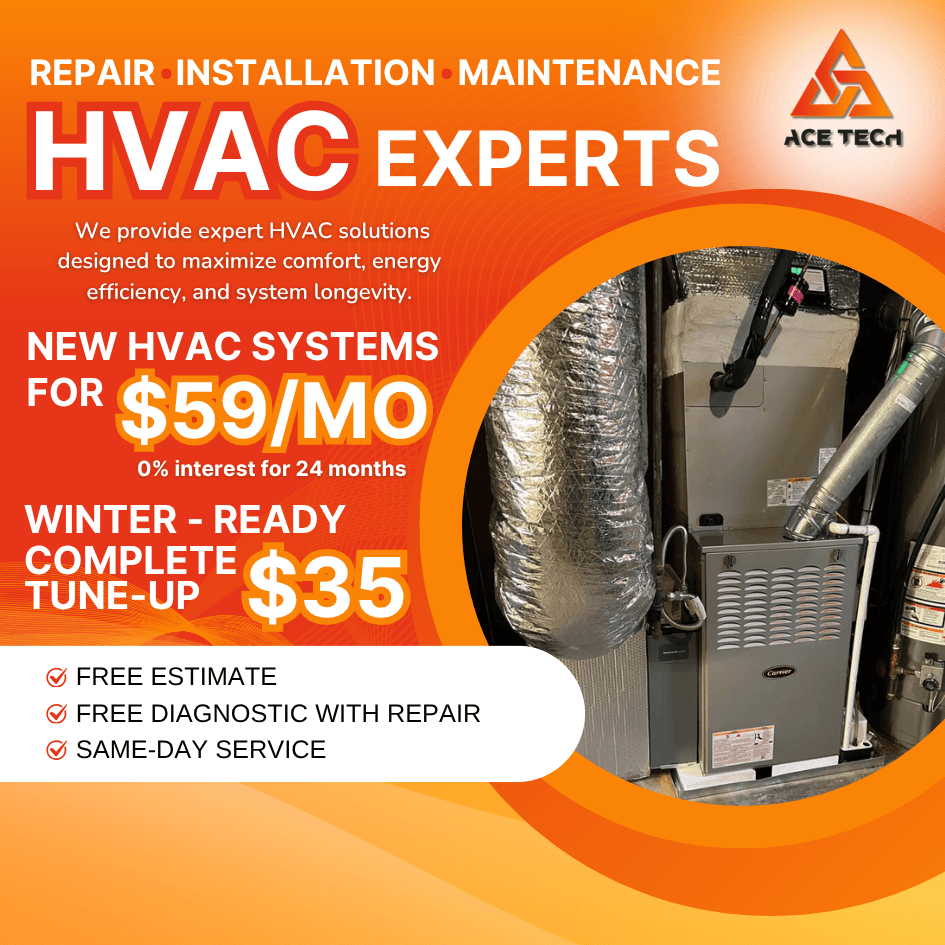As temperatures rise, making sure your HVAC system is ready for the summer heat becomes essential for staying cool and avoiding unexpected breakdowns. A little preparation can go a long way in keeping your home comfortable and your energy bills in check during the hottest months. From cleaning filters and checking refrigerant levels to inspecting ductwork and scheduling professional maintenance, there are several summer HVAC prep steps you can take to ensure your system runs efficiently all season long. In this guide, we’ll walk you through key tips for summer HVAC prep, so you can beat the heat with confidence and enjoy uninterrupted comfort when it matters most.
Beat the Heat: Your Summer HVAC Prep Starts Here
Importance of Preparing Your HVAC System for Summer
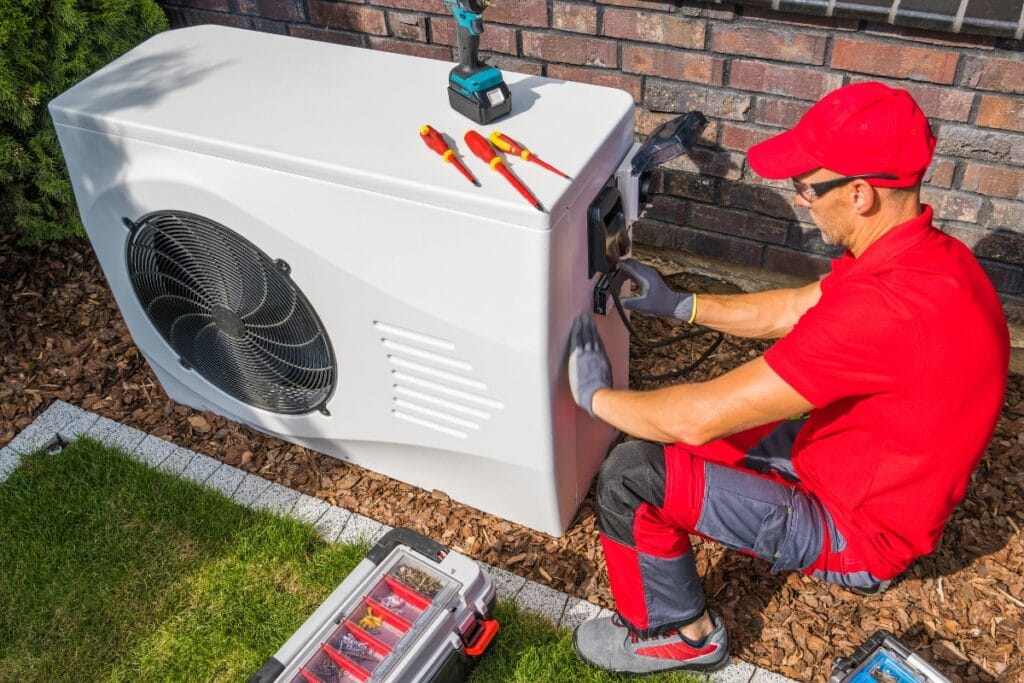
As temperatures climb, your HVAC system becomes one of the most important appliances in your home. Getting it ready before summer hits full force can save you from uncomfortable days, costly emergency repairs, and high energy bills. Summer HVAC prep ensures your system runs efficiently, keeping your home cool without working harder than necessary.
One of the most important reasons to prepare your HVAC system in advance is to prevent unexpected breakdowns. When your system runs nonstop during the hottest weeks, even small issues can turn into major problems. Taking time now to check for worn-out parts, clean filters, and test thermostat accuracy can help catch problems before they lead to failure. A tuned system doesn’t just last longer—it also runs more efficiently, using less energy to cool your home.
There’s also an air quality benefit. Most people keep their windows closed in the summer to trap cool air inside. This reduces fresh airflow and allows dust, pet dander, and pollen to circulate unless your HVAC system is clean and well-maintained. Dirty filters and ductwork can turn your air conditioner into a source of allergens and odors. By replacing filters and inspecting vents, you help maintain a cleaner, healthier indoor environment.
Seasonal maintenance is also a smart move financially. An efficient system reduces monthly utility costs, which can spike during summer due to longer run times. Regular upkeep can also help you avoid costly last-minute service calls when repair technicians are in high demand.
In short, preparing your HVAC system for summer is about more than comfort—it’s about preventing breakdowns, lowering costs, and maintaining better indoor air quality. A little preparation now goes a long way when the summer heat arrives.
Check and Replace Air Filters
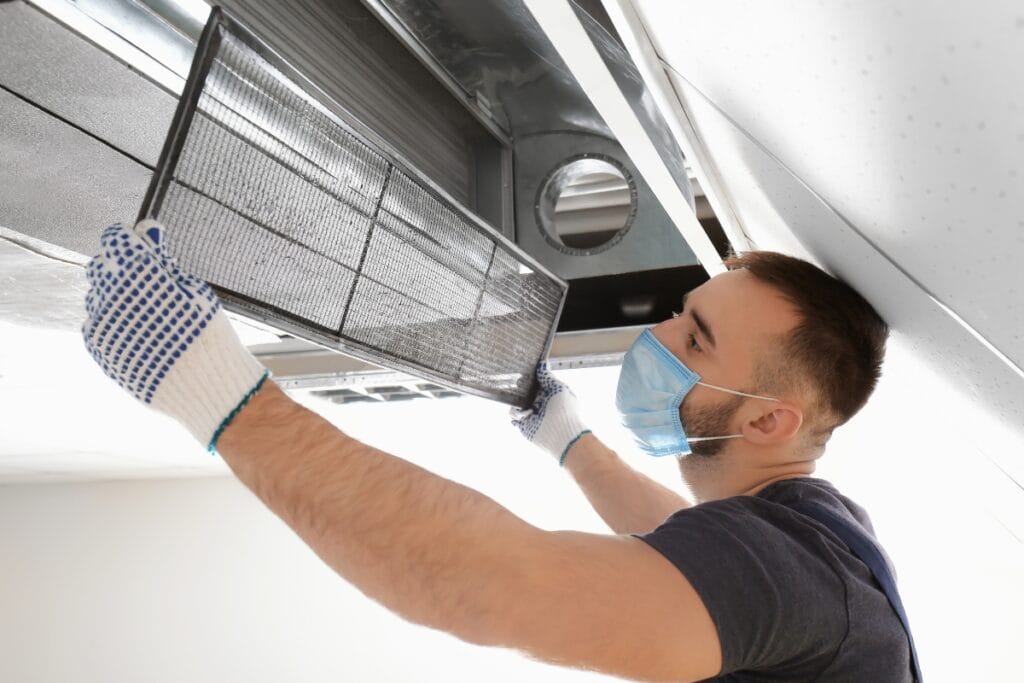
One of the easiest and most important steps in summer HVAC maintenance is checking and replacing your air filters. Over time, filters collect dust, pet hair, pollen, and other particles. While this helps improve your indoor air quality, it can also block airflow if the filter becomes too dirty. A clogged filter forces your system to work harder to push air through, which leads to higher energy bills and unnecessary strain on your HVAC equipment.
During the summer months, when your system is running more frequently, it’s smart to check disposable filters every 30 to 60 days. If you have pets or live in a dusty environment, checking them even more often is a good idea. Reusable filters should be cleaned according to the manufacturer’s instructions, usually once a month during heavy use.
Choosing the right filter matters, too. Filters are rated by MERV (Minimum Efficiency Reporting Value), which measures how well they capture particles. A filter with a MERV rating between 8 and 11 is generally sufficient for most homes. These filters catch common allergens without overly restricting airflow. Higher-rated filters, such as MERV 13 or above, capture finer particles but may limit airflow if your system isn’t designed for them. Using these higher-efficiency filters could require adjusting the fan settings or consulting with a professional to make sure your system continues to run properly.
Making a habit of checking and replacing your air filters is a low-cost, high-impact way to keep your HVAC system efficient and your indoor air clean. It takes just a few minutes and can help avoid costly repairs and poor performance during the hottest days of the year.
Clean and Inspect Vents and Ducts
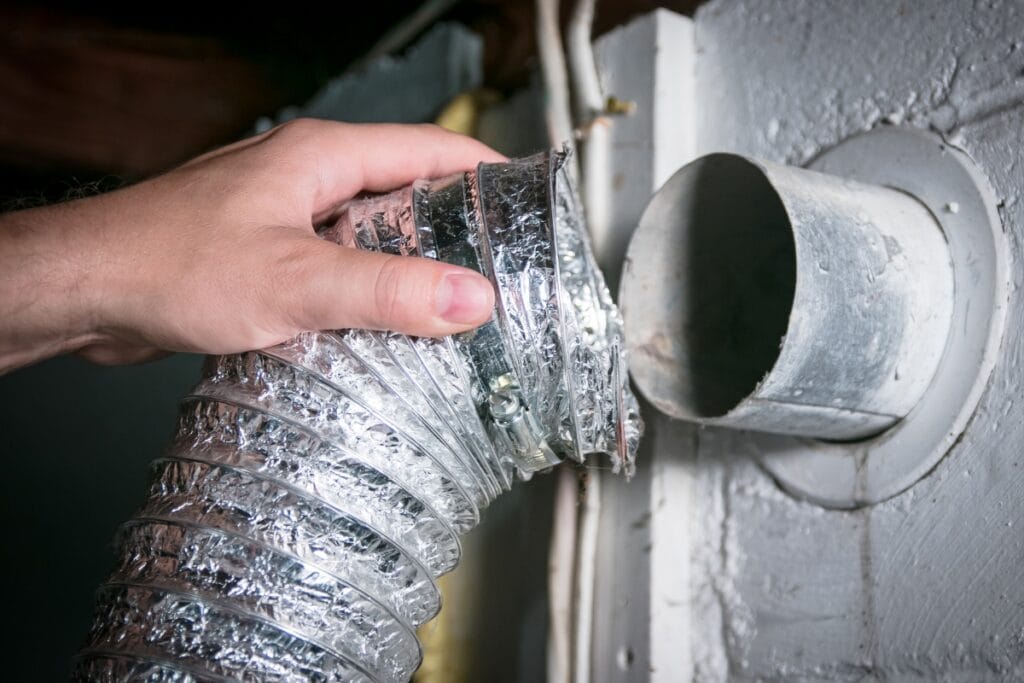
Dirty or blocked vents and ducts can cause uneven cooling and strain your HVAC system. If airflow is restricted, your system will have to work harder to maintain a consistent temperature, which leads to higher energy use and unnecessary wear on components. As part of your summer HVAC preparation, it makes sense to inspect and clean the areas you can access.
Start by checking all supply and return vents in your home. Remove the covers and vacuum away any dust or debris you see. A soft brush attachment can help loosen buildup without damaging the metal or plastic surfaces. Make sure no furniture or rugs are blocking the vents, as this can disrupt airflow and make some rooms feel warmer than others.
Next, take a look inside the duct openings. If you see a thick layer of dust, pet hair, or signs of mold, it may be time to call a professional duct cleaning service. While some experts debate the need for regular duct cleaning, it can be helpful in certain situations—especially if your home has recently undergone renovations, or if there are visible signs of debris or moisture inside the ducts. A qualified technician can inspect your ductwork and determine if a deeper cleaning is necessary.
Even if a full duct cleaning is not needed, simply keeping vents clean and unobstructed can make a noticeable difference in how efficiently your HVAC system cools your home. It also helps maintain better indoor air quality by limiting the spread of dust and allergens. For a more thorough seasonal tune-up, consider adding duct inspection to your checklist to catch any early signs of leaks, damage, or blockages. Small steps like these help your HVAC system run smoothly when summer temperatures start to rise.
Schedule Professional HVAC Maintenance
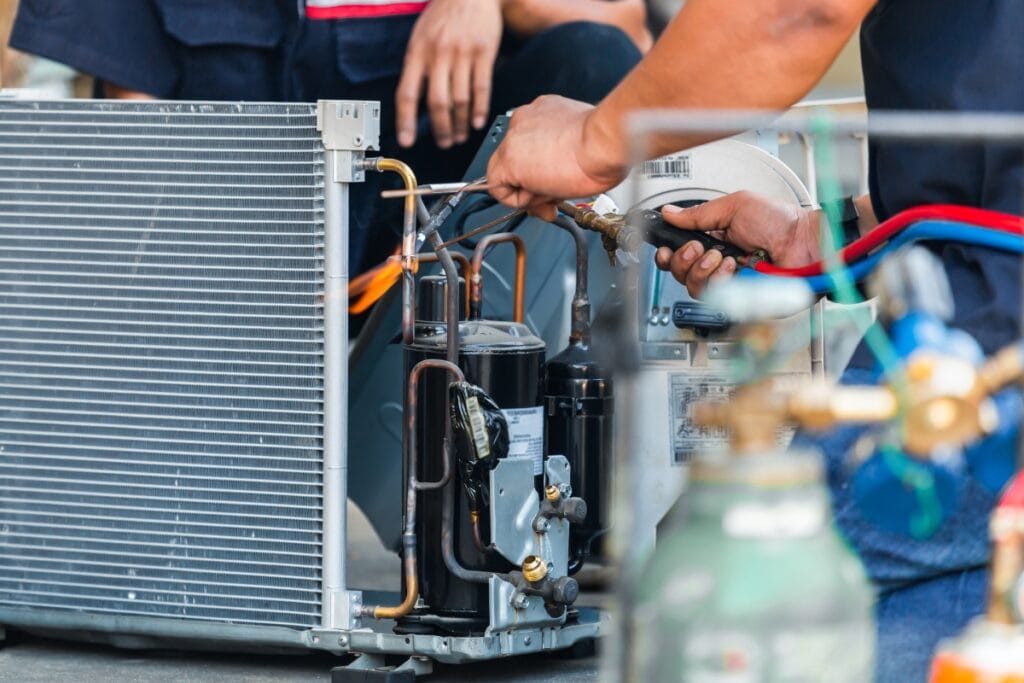
While routine tasks like changing filters and cleaning vents are important, a licensed HVAC technician can provide a much deeper level of maintenance. Scheduling professional service as part of your summer prep helps catch small problems before they become big ones. A typical maintenance visit includes checking refrigerant levels, testing electrical connections, cleaning coils, inspecting the thermostat, and making sure all safety controls are working properly.
These are not items most homeowners are equipped to handle. For example, low refrigerant can make your system run constantly without cooling the house properly, but it takes the right tools and expertise to measure and recharge it. Similarly, clogged condensate lines can lead to water damage if not addressed, and worn electrical components like capacitors or contactors could fail during peak summer heat, shutting the system down entirely.
Experts generally recommend getting your system checked once a year, ideally in late spring before the hottest days hit. This ensures your system is running at its best when you need it most. A technician will also clean the evaporator and condenser coils, which often collect dirt and debris over time. Dirty coils force the system to work harder and use more energy, driving up your cooling bill.
In short, a professional tune-up is an investment in reliability, performance, and long-term savings. It also gives you peace of mind. When you know your HVAC system has been checked by a pro, you can focus on enjoying your summer instead of worrying about a breakdown. Regular service can extend the life of your equipment and reduce the risk of expensive emergency repairs. For a smooth, trouble-free cooling season, make professional maintenance a non-negotiable part of your summer HVAC prep.
Test Thermostat Functionality
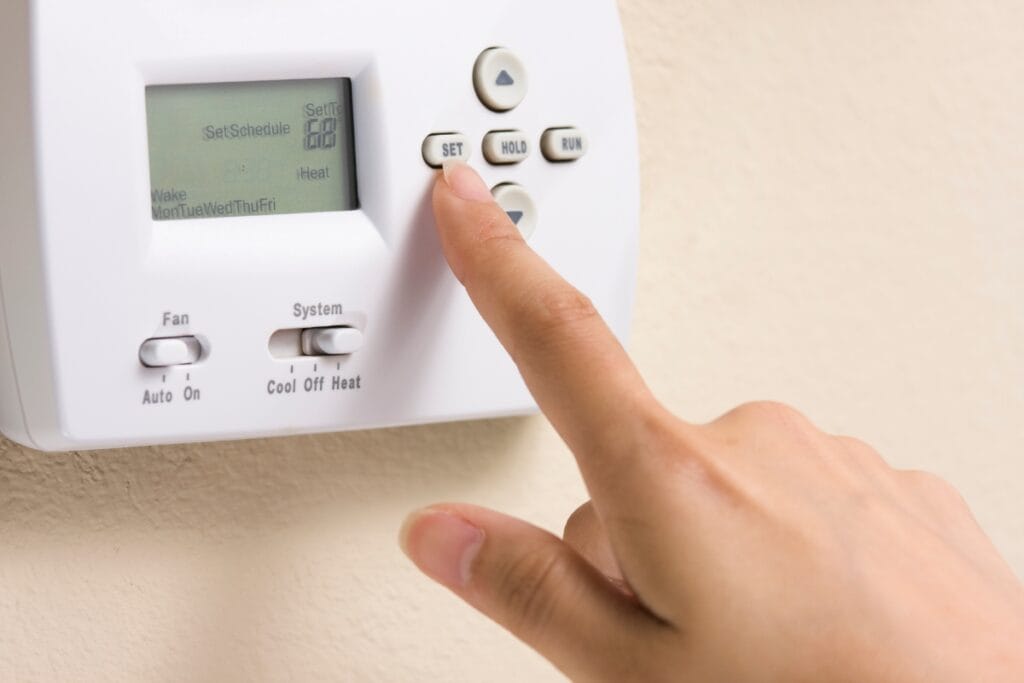
Your thermostat controls when and how your HVAC system runs, so it needs to be accurate and responsive. If it is not working properly, your home may cool unevenly or waste energy by running longer than necessary. As part of your summer HVAC preparation, take a few minutes to make sure your thermostat is functioning as it should.
Start by placing a basic room thermometer near the thermostat. After a few minutes, compare the readings. If there is a difference of more than two degrees, your thermostat may need recalibration. Check your thermostat’s manual for instructions, or consider calling a technician if you are unsure how to make the adjustments.
If you use a programmable thermostat, take time to review your settings. Update schedules to reflect your current habits. For example, if you are working from home more often, your cooling needs during the day may be different than in past years. Be sure the system is not cooling an empty house unnecessarily, which can drive up your utility bills.
If your thermostat is older or non-programmable, it might be time for an upgrade. A programmable model lets you set specific temperatures for different times of day, and a smart thermostat adds even more features. Some models adjust based on your phone’s location or learn your habits over time. These upgrades help keep your home comfortable while saving energy.
Also check that the thermostat is clean and level on the wall, especially if it is mechanical. Dust buildup or a poor mounting position can affect performance. Finally, test the system by adjusting the temperature a few degrees cooler and listening to confirm that the HVAC system turns on quickly. A responsive thermostat makes your system more efficient and your summer far more comfortable.
Inspect Outdoor Unit for Debris and Damage
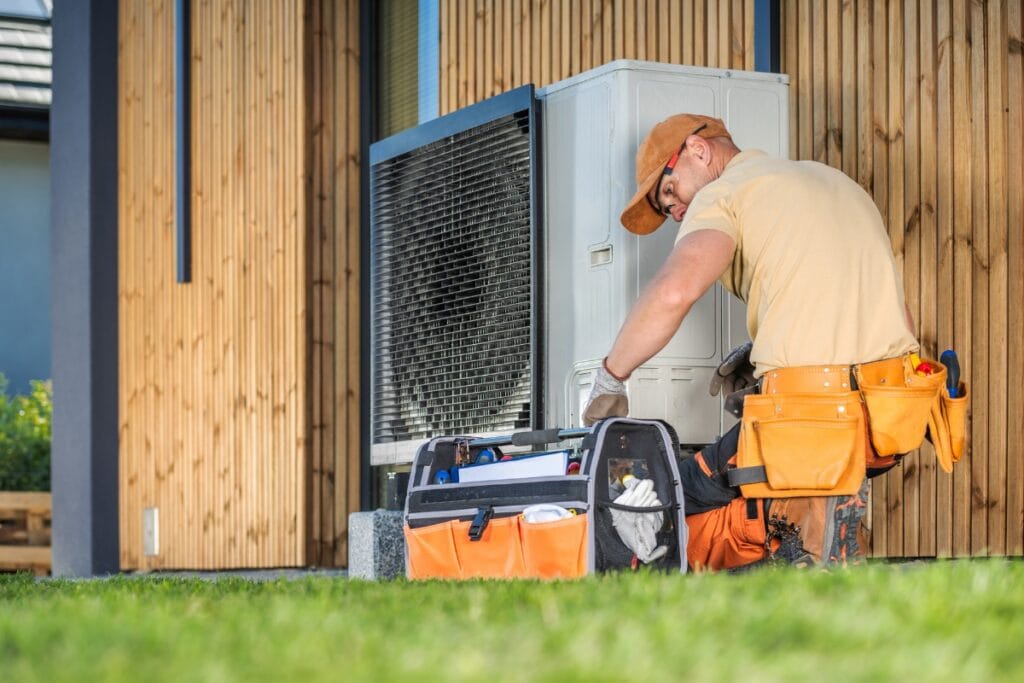
The outdoor condenser unit is often exposed to leaves, dirt, and yard debris that can block airflow and reduce system efficiency. If airflow is restricted, your air conditioner has to work harder, which raises energy costs and increases the chance of breakdowns. That is why inspecting and cleaning the unit is a key part of summer HVAC preparation.
Begin by turning off power to the unit at the disconnect box or breaker. Remove any large debris around the base, including sticks, leaves, or overgrown grass. Keep the area around the unit clear by trimming back plants and removing anything within two feet of the unit. This open space allows for better ventilation and helps prevent overheating.
Next, clean the condenser coil fins. Use a garden hose with moderate water pressure to spray the coils from the inside out. This removes dirt buildup without forcing debris deeper into the system. Avoid using high pressure, which can bend the thin metal fins. If some fins are already bent, use a fin comb or a dull butter knife to carefully straighten them.
While inspecting the unit, take a close look at the fan blades. Look for signs of wear, cracks, or warping. Check that the fan spins freely and that the mounting bolts are secure. Also check the refrigerant lines for visible damage or missing insulation. Damaged insulation can lead to energy loss and reduced cooling performance.
Finally, make sure the unit is level. A tilted condenser can strain internal components and lead to early failure. Use a small carpenter’s level to check and adjust if needed. Taking the time to inspect and maintain the outdoor unit can help your HVAC system run efficiently and keep your home cool during the hottest months.
Enhance Energy Efficiency with Programmable Thermostats
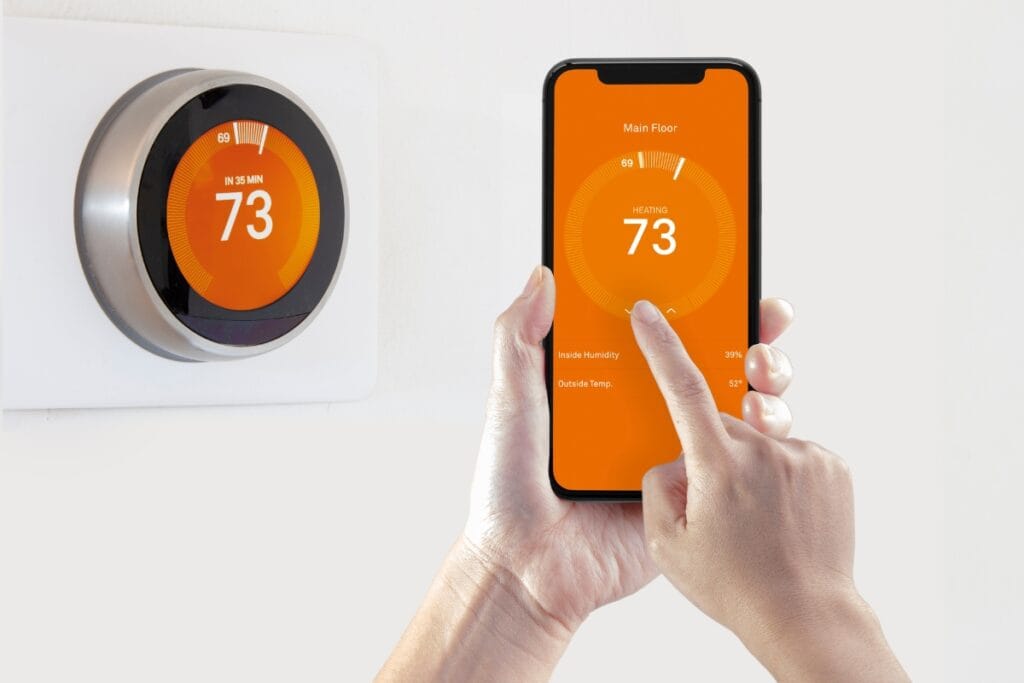
Installing a programmable or smart thermostat is one of the simplest and most effective ways to improve your HVAC system’s energy efficiency. These thermostats automatically adjust the temperature based on your schedule, reducing energy use when no one is home and maintaining comfort when you return. Instead of running your system all day, you can program it to cool the house just before you wake up or arrive home, which can lower your energy bills by as much as 10 to 15 percent.
Smart thermostats offer even more control and convenience. Many can learn your preferences over time, adjusting temperatures based on your habits and making changes automatically. Some use geofencing technology to detect when you’ve left the house and switch to an energy-saving setting. When you’re on the way home, the thermostat readjusts the temperature so your house is comfortable when you arrive.
Mobile apps that pair with smart thermostats give you remote access to your HVAC system. Whether you are at work or on vacation, you can check and change settings from your phone. Some models send reminders when it’s time to change air filters or schedule maintenance, keeping your system in top shape.
In addition, smart thermostats provide detailed energy usage reports. These insights help you understand how and when you use energy, making it easier to adjust settings and improve efficiency without sacrificing comfort.
Upgrading to a programmable or smart thermostat is a practical step in any summer HVAC prep checklist. It not only helps cut down on utility costs but also gives you more control over your home’s comfort. Whether you’re home or away, a smart thermostat makes managing your energy use easier and more effective.
Conclusion: Enjoy a Cool and Comfortable Summer with a Well-Prepped HVAC System
A little prep now can save you from sweaty scrambles and costly breakdowns when temperatures spike. At Ace Tech Heating & Cooling, our certified technicians and expert air conditioning services will tune up your system, replace worn parts, and optimize airflow so your home stays cool and efficient all summer long. Ready to beat the heat before it even arrives? Give us a call at (404) 369-9100 or head to our website to fill out our free quote form—and rest easy knowing your comfort is in expert hands.


